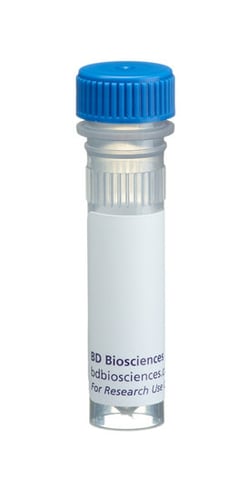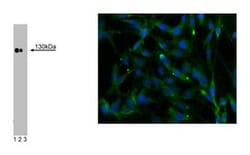Learn More
Phospholipase Cβ4 Mouse, Unlabeled, Clone: 56, BD
Mouse Monoclonal Antibody
Supplier: BD Biosciences 611540
Description
Phospholipase C (PLC) hydrolyzes inositol phospholipids into diacylglycerol and inositol 1,4,5-trisphosphate (IP3). Multiple distinct PLC isoenzymes have been identified and divided into three structural types: α, β, and γ. This classification is based primarily on the location of the conserved X and Y domains, whose structural integrity is essential for a functional catalytic core. The activation of PLCβ isoenzymes is uniquely regulated by G protein subunits, while PLCγ is activated following phosphorylation by protein tyrosine kinases. The β subfamily of PLC consists of at least four members: β1, β2, β3, and β4. PLCβ4 differs from the other members in that it is not activated by G protein βγ subunits, it is not found in the liver or kidney, and it is inhibited by ribonucleotides. Various isoforms of PLβC4 result from alternative splicing or proteolytic cleavage. PLCβ4 is expressed in retina and brain and knockout mice display ataxia and abnormalities in metabotropic glutamate receptor function in the cerebellum. Thus, PLCβ4 is primarily found in neuronal tissues where it is thought to be important in neurotransmitter signaling pathways.
Host Species: Mouse
Clone: 56
Isotype: IgG1
Species Reactivity: Rat
Immunogen: Human Phospholipase Cβ4 aa. 752-961
Formula Weight [Chemical]: 130kDa
Immunofluorescence, Western Blotting

Specifications
| Phospholipase Cβ4 | |
| Monoclonal | |
| 250μg/mL | |
| PLCβ4 | |
| Mouse | |
| Affinity Purified | |
| RUO | |
| Primary | |
| Store undiluted at -20°C. |
| In vitro Assay, Western Blot | |
| 56 | |
| Unconjugated | |
| Aqueous buffered solution containing BSA, glycerol, and ≤0.09% sodium azide. | |
| Human Phospholipase Cβ4 aa. 752-961 | |
| 50 μg | |
| Cell Biology | |
| Fly, Human, Mouse, Rat | |
| IgG1 |
Safety and Handling
Your input is important to us. Please complete this form to provide feedback related to the content on this product.

